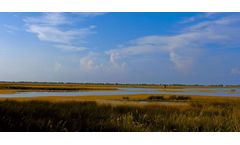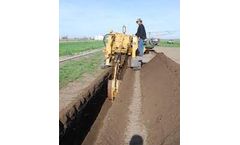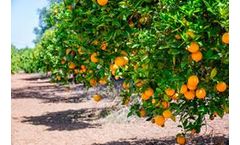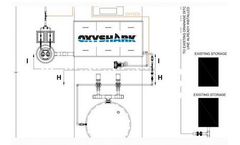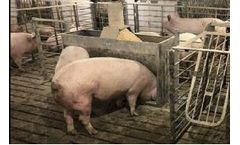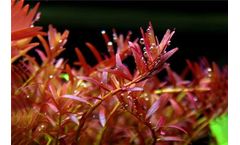Leaf Water Articles & Analysis
20 articles found
Challenge Leading American coffee chain, Coffee Bean & Tea Leaf, knows the quality of the water - comprising 98% of each beverage’s ingredients - is critical to the taste of each drink they sell. Several regional water quality issues negatively impacted the business’ product and equipment, affecting the beverage maker’s ...
30 years of data show salinity of groundwater increasing even far from coasts After 30 years of monitoring wells, the latest U.S. Geological Survey (USGS) research shows groundwater across the nation is becoming saltier. It has long been known that seawater can intrude when coastal aquifers become depleted and sea levels rise, but the most recent research throws light on saline intrusion far ...
That’s why it’s crucial to dive deep into the potential causes and solutions for this peculiar leaf curling. Fear not, my friend! In this article, we’ll provide you with information and advice to unravel the mystery behind those curling leaves. ...
Placing water beneath the soil surface via buried lines is slowly becoming the "preferred choice" of many vineyard irrigators. The reasons are many, including the absence of surface evaporation, as well as reduced weed growth, herbicide washout, maintenance, injury, and vandalism found with using conventional water application systems. The advantages of subsurface drip add to reduced cost for ...
Since 2019 over 75% of the citrus crops (oranges 75% and grapefruit 85%) has been lost due to an infectious bacterium called huanglongbing (HLB) commonly known as “citrus greening”. Leaves of newly affected trees developed blotchy mottle appearance and the fruit is of no value-it has limited use in juicing operation. As of today, there has not being a commercially available solution ...
The Alabama Gulf Coast is well known for supplying quality seafood to consumers around the world. Because of its massive levels of water usage, the seafood processing industry brings with it a need to use water efficiently throughout its ...
A major concern for many producers who are evaluating the use of electronic sow feeding (ESF) in gestation barns is the impact on labor/staff and how a system that utilizes technology may increase either the time needed to manage group housing, or the quality of staff required to manage group housing, or both. As is the case with conventional European ESF’s, there is indeed a training ...
1. It is best to turn off the Surface Oil Skimmer when trimming Foreground grasses, such as cow Eleocharis parvula, Hemianthus callitrichoides 'Cuba', and Glossostigma elatinoides, have a lower density than water, and there will be a lot of debris floating on the water when trimming. The debris is likely to enter from the surface skimmer into the filter cartridge, causing excessive accumulation ...
Most often, they require little sample preparations, and the measurements are non-destructive. Leaf Area Differences point to Optimum Irrigation in Greenhouses In terms of water usage, greenhouses are more sustainable than open fields. ...
NEUTHOX® removes biofilm in cooling tower and leaves the water system completely free of unwanted bacteria Using an electrolysis process of saltwater the ECA generator produces the liquid NEUTHOX®, which contains hypochlorous acid, and is highly efficient in eliminating bacteria. A biofilm consists of living and dead organic and inorganic material collected on a surface, which in water ...
They need carbon dioxide (CO2) in the air, which enters the plant through leaves, and water (H2O) from the soil, which roots absorb. Light captured by chlorophyll in the leaves combines water and carbon dioxide to produce glucose (C6H12O6) and oxygen (O2). ...
They need carbon dioxide (CO2) in the air, which enters the plant through leaves, and water (H2O) from the soil, which roots absorb. Light captured by chlorophyll in the leaves combines water and carbon dioxide to produce glucose (C6H12O6) and oxygen (O2). ...
Moisture One of the most common stresses that plants will likely experience, especially temporarily, is due to water. Drought: A lack of water can occur due to acute or chronic drought, as well as indirectly due to water deficits created through high temperatures. Its effect on plants can be measured through Leaf ...
Moisture One of the most common stresses that plants will likely experience, especially temporarily, is due to water. Drought: A lack of water can occur due to acute or chronic drought, as well as indirectly due to water deficits created through high temperatures. Its effect on plants can be measured through Leaf ...
Waterways in the Cantareira forest north of São Paulo form part of the cities natural water infrastructure. Riparian forests are seen as natural water infrastructure In early 2018, Cape Town, South Africa, averted a potential “Day Zero” crisis, that is, the day that taps would have gone dry. This drew international media attention, but in 2014 a modern city of 11 million ...
Pores on the leaf called stomata open and close to regulate photosynthetic rate and water loss Air is drier than the inside of a leaf. When stomata open, water molecules evaporate out of the leaf in a process called transpiration. ...
A simple water balance model was used to calculate soil water reserve in a Mediterranean forested catchment. The relationship between soil water reserve and leaf water potential and stem water content was analysed. ...
Dry matter partitioning, flowering, root hydraulic conductance, leaf water potential, lint yield, yield components, and fiber quality data were collected. Cultivars differed in leaf water potential, leaf osmotic potential, and root hydraulic conductance. ...
A field study was conducted in western Minnesota on a Barnes loam soil (fine-loamy, mixed, superactive, frigid Calcic Hapludolls) in 2002 and 2003 to compare yield and water use of irrigated and nonirrigated cuphea. Nonirrigated cuphea received only precipitation, while irrigated plants received supplemental watering to maintain soil water ...
During a sprinkler irrigation event some water is lost due to wind drift and evaporation (WDEL). After the irrigation event, plant-intercepted water is lost due to evaporation. The water lost causes microclimatic changes which could result in positive or negative plant physiological changes. ...


